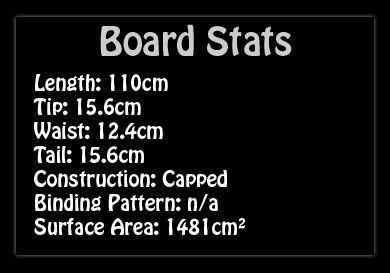First impressions.. they are pretty long. I put them up against my Condors and realized they are longer than them. At that time, I didn’t know they were 112.8cm, but I suspected as much from the difference. The shape is more attuned to the Lacroix and Summits than the ALPs. The ALPs, Condors and Spruces have a broad tip/tail, while the Bulldogs, Lacroix, and Summits have a more tapered tip/tail. The Bulldogs are also heavy, similar to the Woodies, but not because of the material to make the skiboard, but due to it’s binding system.
On each skiboard, there are 4 metal plates. These plates allow you to switch between skiboard and snowboard mode. These metal plates add weight. The bindings are all metal, solid. Since they rely on the metal plates for their skiboard/snowboard mode, you can only use the bindings that come with the Bulldogs, they are not standard 4 x 4 mountings. The bindings are extremely heavy, much heavier than the Bomber Elites, and almost as heavy as the Spruce Pro Lights. If the Bombers were called bomb-proof, these beefy bindings are nuclear-proof. Unlike the FF, Elite, and Extreme II bindings, they are constructed very differently.
Both the FF Pros Aluminums and the Snowjam Extreme IIs are constructed with a rubber washer-type material on the bottom for shock absorption that spans the length of the binding. On top of this is a metal plate, which is about 1/4″ thick. This plate is used to mount the binding into the skiboard, and to also mount the heel/toe pieces to clip into your boot. Adjustment for boot size is made by moving the heel/toe pieces on metal teeth which makes sizing very easy.
The Bomber Elites are different to their approach. There is a 1/2″ circular metal disk that attaches to a 1/4″ metal plate. This metal is plate is attached to a skiboard throught the circular metal disk. The disk is used for the height needed for the shock absorption bumbers on the heel and toes parts on the bottom of the metal plate. The metal plate is also where the toe and heel metal pieces are mounted to clip your boot onto, and they adjust by having 3 hole settings on the heel and toe (total 6 hole adjustments) on the metal plate, plus the toe/heel pieces have another 4 adjustments available. This makes them also very easy for sizing up boots, though not quite as easy as the teeth method.
For the Bulldog bindings, first, there is no shock absorption pads/bumper on these bindings. Instead of mounting the bindings via a center 4 x 4 mount on the binding, these are mounting onto the Bulldog via skiboard mode with toe and heel clips. These clips are all metal, so there are no rubber pieces between the bindings and the skiboard. Second, the bindings are very heavy. It’s a solid piece of 1″ thick metal. One Bulldog binding weighs the same as two Elites/FF Pros/Snowjam Extreme IIs. Third, the micro-adjustments for the bindings are similar to the Bombers where the toe and heel bails can be twisted for micro-adjustments, which is great and adaptable to all boot sizes.
Now comes the review of how they perfomed on the slopes. Since I don’t snowboard, I only used them as skiboards. For the rest of the day, I dedicated my time using the Bulldogs in skiboard mode, from mid-mountain down to base and from summit down to base, made a total of 8 runs to get a proper feel of them. As skiboards, they perform very well, with the length and speed of a 110 such as the ALPs or Custom 110s. They flex similar to the ALPs and the Custom 110s Carbons, not as soft of a flex as the Spruce 120s and not as stiff as the Custom 110s Woodies. The added 2.8cms didn’t seem to make them feel any less quicker/slower than the 110s, but the added weight of the bindings go make you have to push them more on your turns.
One month later, I took the Boardskis out in powder and they performed great. The boardskis are just as wide as the KTPs, but slightly longer than the ALPs/Condors. Condors are slightly wider than the Boardskis, but the Boardskis have less flex than the Condors and it also heavier. This made them able to blow through powder. The powder today was a bit crusty because there was no snowfall yesterday, but the Boardskis were able to go through them without a problem. By the afternoon, once the temps went up and the powder became softer, the Boardskis were also able to handle the powder without skipping a beat.
After all that powder, I decided to take them to the terrain park at Steamboat Springs to go through the small boardercross track and hit some small jumps. Again, they didn’t miss a beat!
Overall, if you like something that can give you the option of both being able to skiboard and snowboard, then this can work very well for you. I do have to note, there is a pretty large gap when in snowboard mode in the middle, and I do wonder can powder get caught in there, especially when making a carve. When going on a flat, the tips are fairly tight so I’m sure they can plow through the powder such that it middle gap won’t get caught.
The Boardskis are a great product and versatile product.
Rider – Edward Ho – Expert Skiboarder


